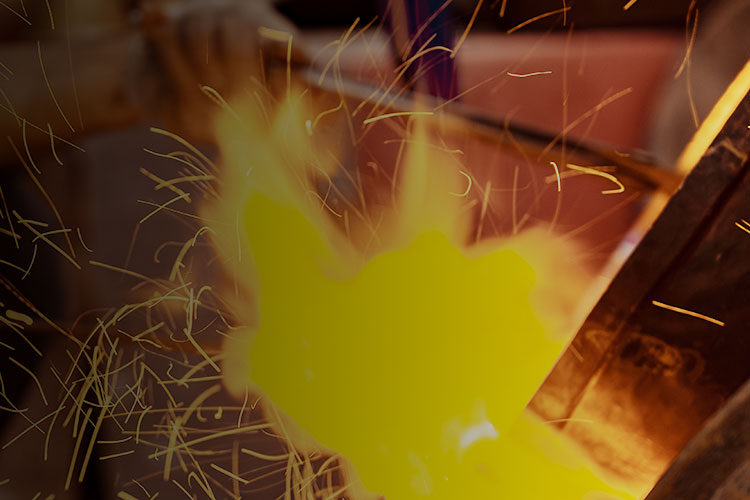Master Alloy
Definition:
Master alloy is a kind of special alloy which takes a metal as the matrix and adds one or several elements to it to solve the problems such as easy to burn, high melting point, high density and easy segregation of the elements or to improve the alloy performance. It is an additive functional material.
Characteristic:
(1) With a metal as the matrix, its content is generally greater than or equal to 50%, such as aluminum, magnesium, copper, etc.
(2) The simple substance to be added generally has such problems as easy to burn, high melting point, high density and easy segregation, which are not suitable for direct addition.
(3) Master alloy is a kind of additive functional alloy material, unlike cast aluminum alloy, wrought aluminum alloy, copper alloy, iron and steel, which are directly used in the production of castings.
Compared with the elements to be added, master alloys generally have lower melting point, faster dissolution rate, more stable yield, and stronger ability to improve alloy properties. Therefore, master alloys can be used for accurate addition of elements and composition adjustment, grain refinement, modification, purification, deoxidation and desulfurization, solid solution hardening, etc. in the process of alloy production, such as aluminum and aluminum alloys, copper alloys It is widely used in steel and other industries.
Type:
Master alloys can be divided into aluminum based master alloys, magnesium based master alloys, copper based master alloys, and rare earth alloys according to different substrates.
Master alloys can be divided into alloying type master alloys (additive type master alloys), grain refining type master alloys, modified type master alloys, purifying type master alloys, deoxidizing and desulfurizing type master alloys according to their uses.
Purpose:
(1) A metal material with accurate chemical composition and uniform distribution is obtained. If an element with a small content in the metal material component is added, the distribution uniformity of the added element in the material can be improved.
(2) Add elements with high chemical activity, low melting point and easy to volatilize. Calcium, magnesium and the like. The use of master alloys can reduce the burning loss of elements during addition, and obtain stable alloy composition and high element yield.
(3) A high melting point metal is added. Master alloys such as tungsten, molybdenum, titanium, niobium and chromium can reduce the melting temperature, shorten the melting time of metal materials and reduce the melting temperature.
(4) Many elements can be added at the same time by using the master alloy, so that the refining and alloying of the smelting alloy can be completed at the same time. The smelting operation is simplified and the refining time is shortened.
(5) The use of pure master alloys can reduce the content of impurities in metal materials.
(6) Reduce the production cost of metal materials. The melting point of the master alloy should be as low as possible; Uniform chemical composition and small segregation; No visible non-metallic inclusions; Low gas content; The impurity content must meet the requirements of the smelting metal material; It is easy to be broken and stored in the air without deterioration.

